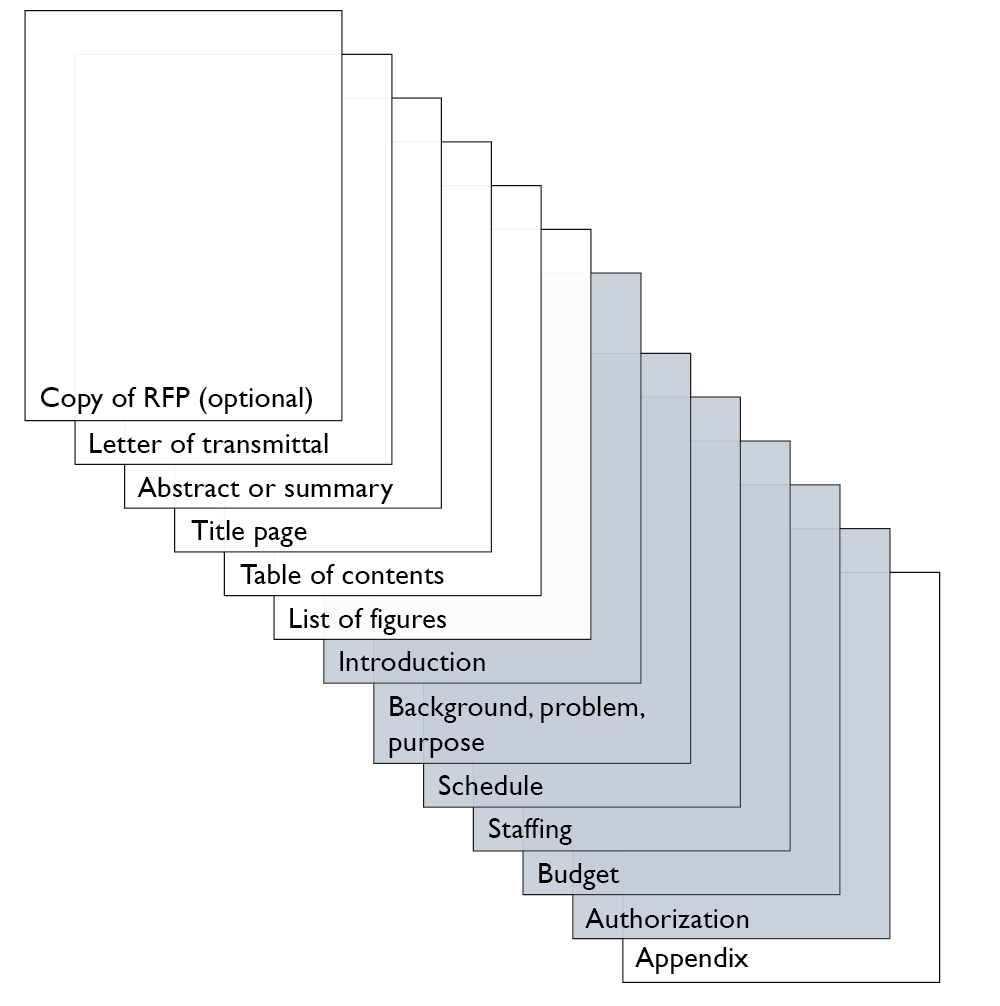Learning Outcomes
- Describe various sections that may be used in the front of a report
- Describe various sections that may be used in the body of a report
- Describe various sections that may be used in the back matter of a report
Depending upon the situation and the institution you’re working for and the audience that you’re writing addressing, some or all of the following sections may be required in a specific formal report. Some guides to formal reports will indicate specific sections that are recommended for each type of formal report. However, writers will need to be sensitive to the organization’s requirements or expectations and the needs of the information, then use that knowledge to determine the contents of their report.
The next few pages describe a large number of these section types so you, as a writer, may pick and choose what is appropriate to each situation. It is important to the report’s impact and the writer’s professional image to understand the purpose of each of these sections.
In a formal report there are three major sections.
- The front part includes sections that come prior to the report itself to establish various items such as authority of the report and intended audience.
- The body of the report has many sections of key information and possible analysis. It is the meat of the report.
- The back matter contains sections of material that support the body.
Take a look at Figure 1. In this figure, we see an example of the many potential sections in a sales proposal. This example models a response to an RFP (request for proposal), and each sections was required by the customer requesting the bid. The sections are illustrative of what an RFP report may contain and the author will determine which specific sections are needed based on report purpose, company policy, and audience.

Figure 1. Sections of a Sales Request for Proposal
Candela Citations
- Sections Used by Many Formal Reports. Authored by: Susan Kendall. Provided by: Lumen Learning. License: CC BY: Attribution
